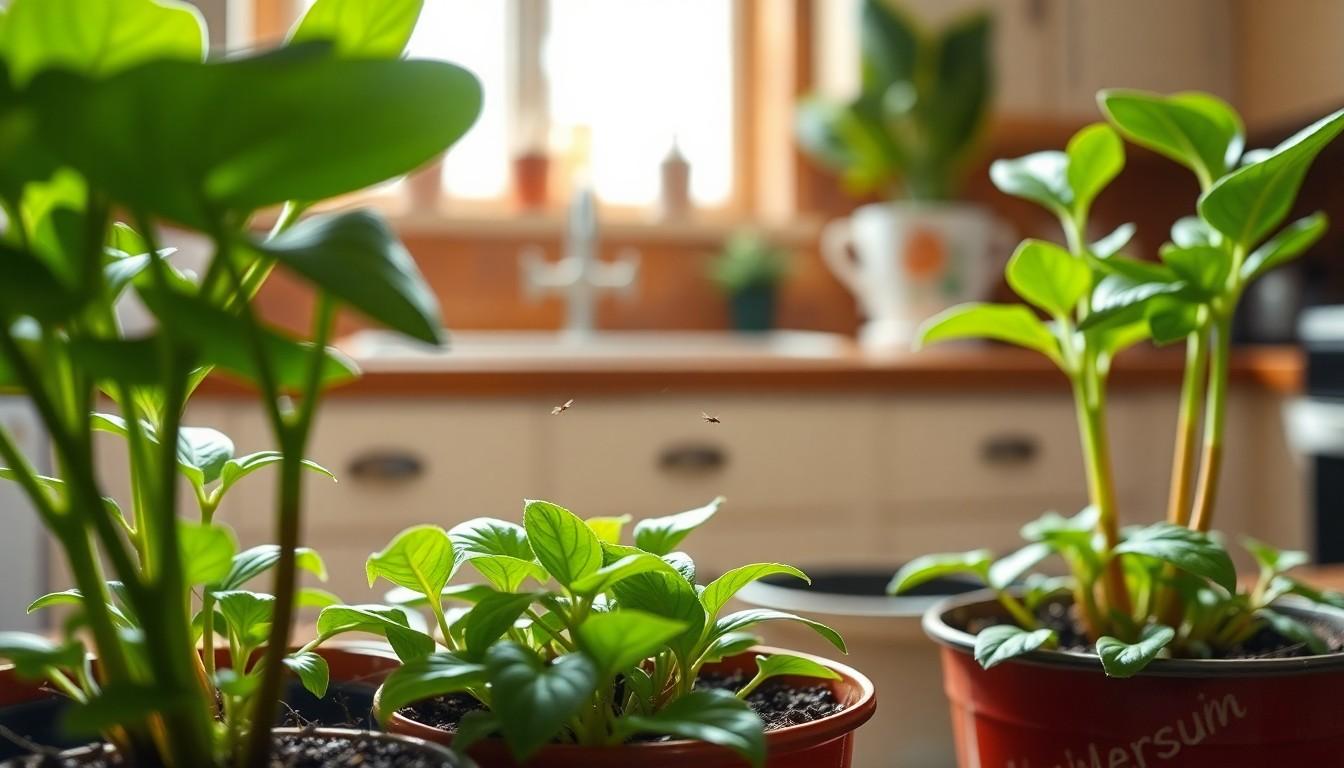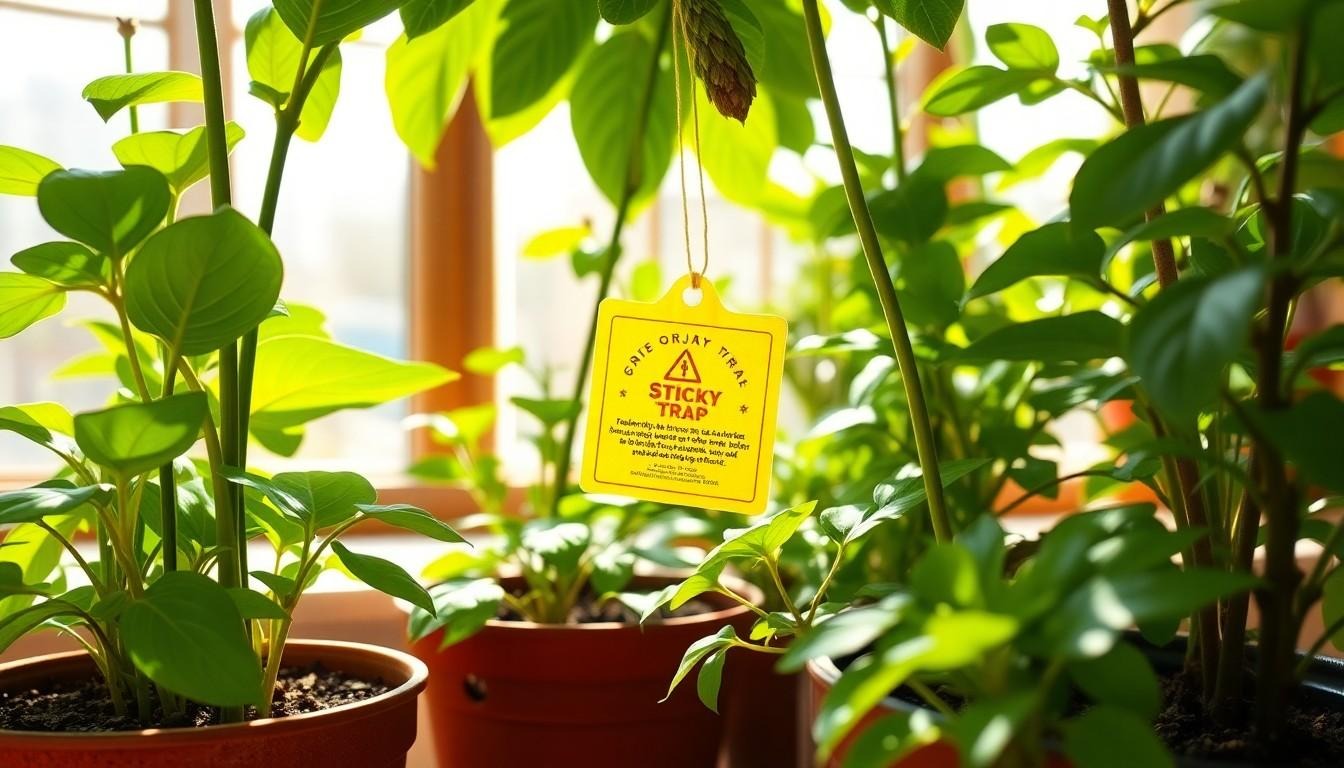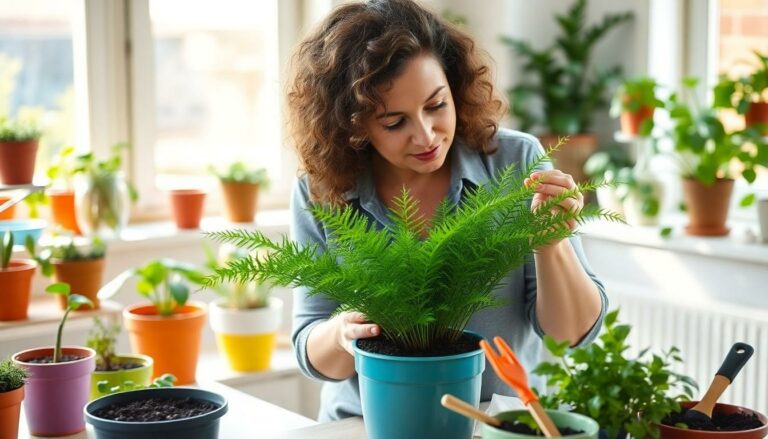Indoor plants can turn any space into a green oasis, but pesky gnats have a knack for crashing the party. These tiny invaders not only annoy plant lovers but can also harm the delicate roots of beloved foliage. If you’ve ever found yourself swatting at these little nuisances while trying to enjoy your plant paradise, you know it’s time to take action.
Best Gnat Killer for Indoor Plants
Indoor gnats primarily consist of fungus gnats, a common pest affecting houseplants. These small, dark insects thrive in moist soil, seeking organic matter for breeding. Typically, infestations occur due to overwatering plants or allowing water to accumulate in saucers.
Observing gnat activity can indicate poor plant health, as larvae feed on roots and organic debris. Excessive reproduction leads to a quick rise in their population, creating an annoying environment among indoor plants. Additionally, adult gnats can spread diseases to the plants, further jeopardizing growth.
It’s important to identify the signs of gnat presence early on. Scrutinizing soil for adult gnats buzzing around, or noticing tiny larvae in the upper layers can assist in detecting an infestation. Effective action against gnats ensures the well-being of the plants.
Control methods vary in effectiveness. Options include using sticky traps positioned near affected plants or natural solutions like beneficial nematodes. Cleaning up debris and allowing the soil to dry between waterings significantly reduces gnat habitats.
Maintaining proper care practices creates a less inviting environment for gnats. Monitoring humidity levels and improving ventilation can further minimize the risk of infestations. By addressing the underlying causes, plant lovers can protect their indoor oasis from these persistent pests.
Common Types of Gnats Affecting Indoor Plants

Indoor plants often face threats from various types of gnats, each presenting unique challenges. Understanding these pests helps in effective control.
Fungus Gnats
Fungus gnats rank among the most common indoor plant pests. They thrive in moist soil, frequently resulting from overwatering. Their larvae feed on organic material and plant roots, leading to stunted growth and root damage. Monitoring for the small, dark adult gnats fluttering near plants offers a clear sign of infestation. To combat fungus gnats, reducing excess moisture is essential. Implementing methods such as sticky traps and allowing soil to dry between waterings can significantly decrease their population.
Fruit Flies
Fruit flies, while often associated with decaying fruit, can also affect indoor plants. They tend to appear when overripe fruits or organic debris accumulate around the plants. Adults are small, with a characteristic yellowish-brown color and red eyes. Their larvae feed on sugars in decaying material, which can lead to unhealthy plant environments. Maintaining cleanliness by removing fallen leaves and managing fruit sources reduces fruit fly attraction. Utilizing traps specifically designed for fruit flies can help control their numbers effectively.
Best Gnat Killer Options for Indoor Plants
Numerous effective options exist for controlling gnats in indoor plants. They range from chemical solutions to natural remedies.
Chemical Solutions
Chemical solutions often provide immediate relief from gnat infestations. Insecticidal soap, for instance, targets the pests effectively and minimizes damage to plants. Pyrethrin is another powerful option; it disrupts the nervous system of gnats upon contact. Many gardeners consider neem oil, a natural pesticide derived from the neem tree, as it disrupts the life cycle of these pests. When applying chemical solutions, it’s crucial to follow instructions carefully for optimal results and safety.
Natural Remedies
Natural remedies offer a safe alternative for combating gnats. Sticky traps can capture adult gnats, reducing their population effectively. Utilizing beneficial nematodes introduces microscopic worms that attack gnat larvae in the soil. Coffee grounds, when used as a top dressing, deter gnats and improve soil conditions. Additionally, letting the soil dry out between watering prevents a hospitable environment for gnats. Keeping indoor plants clean and monitoring moisture levels plays a vital role in managing these pests.
Tips for Preventing Gnats in Indoor Gardening
Monitoring moisture levels plays a critical role in gnat prevention. Allow soil to dry out between waterings, ensuring it remains dry for at least an inch below the surface. Reducing excess moisture eliminates the ideal breeding ground for fungus gnats.
Improving drainage also minimizes gnat attraction. Choose pots with drainage holes and use well-draining soil mixes. Enhanced drainage prevents water accumulation, discouraging gnat populations.
Regularly inspecting plants for signs of infestation helps in early detection. Look for adult gnats and larvae near the soil surface. Prompt action at the first sight of gnats can prevent larger infestations.
Cleaning the growing area keeps it tidy. Remove decaying organic matter, including dead leaves and overripe fruits, which attract fruit flies. Maintaining cleanliness helps create an inhospitable environment for these pests.
Utilizing sticky traps provides a simple monitoring method. Position traps near soil surfaces to capture adult gnats. Traps serve both as a tool for detection and an effective way to reduce the adult population.
Incorporating beneficial nematodes offers a natural control solution. Apply them to the soil to target gnat larvae specifically. This method effectively limits larval survival and reduces harm to plant roots.
Using soil covers can deter gnats from accessing the soil. Consider placing a layer of sand or gravel on top of the soil to block access to adult gnats. This simple barrier helps disrupt their breeding cycle.
Fostering proper air circulation within the gardening space is important. Position fans strategically to create airflow around plants. Better ventilation lowers humidity levels, making the environment less inviting for gnats.





